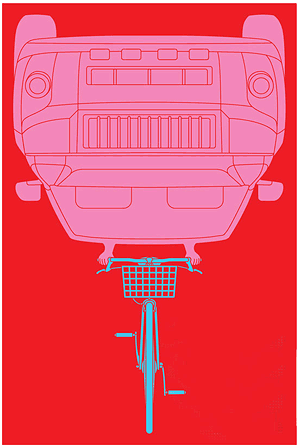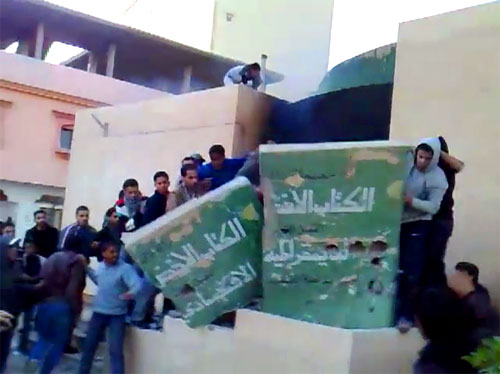public space
Making Passes
Cute urban intervention from bicycle advocacy group Critical Mass in Hungary:
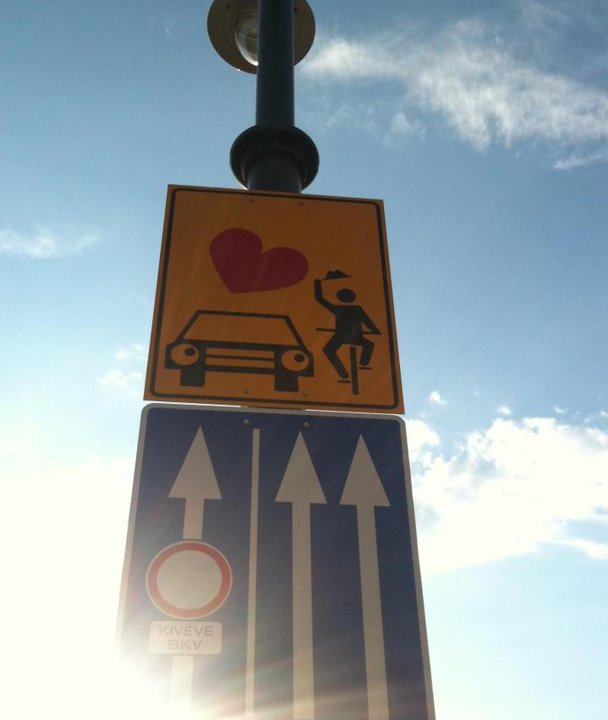
Related: this sticker I caught in Brooklyn.
Field Guide to Phytoremediation
New York City contains over 30,000 vacant lots covering a combined 11,000 acres (nearly the size of Manhattan itself.) Much of this space can not be reused because of toxic contamination and the expense of excavating it. Enter the sunflowers.
Phytoremediation is the use of plants to remove contaminants from the environment. This Kickstarter campaign hopes to both publicize and demonstrate phytoremediation in NYC:
“In 2010, youarethecity created the Field Guide to Phytoremediation, a DIY handbook to cleaning up toxic soils in your own backyard, neighborhood vacant lot, or other urban space. Working with soil scientists, urban farming activists, community groups, and others interested on (and in) the ground, we have expanded this research. We need your help to make this process more visible and accessible to anyone. We want to print 2,000 copies of the field guide, to distribute for free, and to create on-site installations that illustrate and explain the process of phytoremediation at field lab sites throughout New York City.”
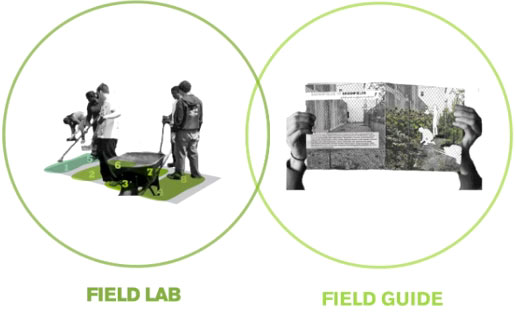
I’m in.
Native Signs
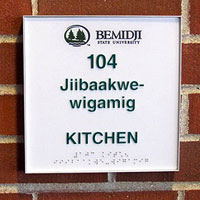
Signs in Bemidji, Minnesota used to read “No Indians Allowed.” Now local businesses increasingly announce their facilities in both English and Ojibwe.
Racism and social exclusion have a long history in the town, but as Tanya Lee writes, a 2005 proposal to voluntarily incorporate Ojibwe words on public signage is having a growing impact:
The idea came in part from Hawaii, where [Michael] Meuers had lived for a year in the 1960s. On the islands, he recalled, native language and culture are a part of everyday life for everyone, as the familiarity with words such as mahalo, luau, aloha, lei and hula prove. On restroom doors, the words men and women are displayed in English and in Hawaiian.
In 2005, a student at Red Lake High School, a school for Red Lake students run by the state of Minnesota, opened fire on the campus with a shotgun and a semiautomatic pistol, killing seven.
“The next day, I was talking to the city manager and noticed a Red Lake flag on a shelf,” Meuers said. “I was working for the tribe at that point and I suggested the city fly the flag. The Red Lake flag flew at half-staff outside City Hall for a week. I never heard so many positive comments about Bemidji. It was the people of the city saying, ‘Bemidji is crying for the Red Lake babies too.’ ”
This prompted Meuers to take his simple idea about the bathroom signs to Shared Visions, a community organization dedicated to addressing the issues of racial disparity and bias. Rachelle Houle served with Meuers on the Cultural Understanding and Respect Committee, and together they set the goal of placing restroom signs in both Ojibwe and English in 20 businesses within a year. Meuers volunteered to pay for the signs.…
“Michael and I both feel a change happening here,” Houle said. “For so long, the Ojibwe culture and people have not been respected here. This is a way of saying, ‘You are valuable.’ It’s a way of showing respect and making people welcome in Bemidji.”…
[Dr. Anton Treuer, professor of Ojibwe at Bemidji State University] says the university has received many calls and e-mails about how to replicate the [universty’s signage] program, and he believes it can serve as a template for other tribes. “We were taking our signs around town when we started,” Meuers said, “and now people are coming to us, not only from the U.S. but also from Canada.”
Google Earth and the Middle East
Ogle Earth runs down a brief list of ways Google Earth and the availability of satellite imagery in recent years have fueled class resentment and conflict in Bahrain, Iran, Iraq, Israel, Saudi Arabia, Sudan, Syria, Tunisia, and Yemen.
Leading the list are dramatic visualizations comparing the overcrowded living conditions of the Shiite majority in Bahrain with the palaces, estates, and private islands of the ruling families. After the country’s ISPs were ordered to block access to Google Earth’s imagery in 2006, this PDF of annotated screencaps illustrating the spatial inequities circulated widely by email.
The End of Print
Few visuals capture the spirit of regime change as much as toppling the monuments of the previous regime. In the case of Libya, revolutionary protesters on YouTube topple a monument to Muammar al-Qaddafi’s revolutionary Green Book.
The future is unwritten!
Space Agents
Wow, it’s been a while since my last post. If and when I do retire this space, I dream of converting it into more of a database of ideas than a reverse-chronological history of my random walks.
For instance, I like what’s happening at spatialagency.net, a database of architectural practices engaged with social and political concerns. The last few years have seen growing number of projects cataloging design and architecture for good, but I think this one has a nice historical breadth and expansive perspective of what constitutes a design practice. I’m not totally down with the “acting on behalf of-” line, but I like the emphasis on context:
Spatial Agency is an ongoing research project that aims to shift the of focus of architectural discourse from one that is centred around the design (= building) and making (= technology) of buildings to one where architecture is understood as a situated and embedded praxis conscious of and working with its social, economic and political context.
In the spirit of Cedric Price the project started with the belief that a building is not necessarily the best solution to an architectural problem. Architecture, and it is easy to forget this, is about a lot more than just objects in space. The project attempts to uncover a second history of architecture, one that looks at other ways that people have operated beyond the building, working on behalf of others as spatial agents. Buildings are of course not excluded, but the project expands its reach to cover all aspects of spatial production - from publications to pedagogy, activism to enabling.


